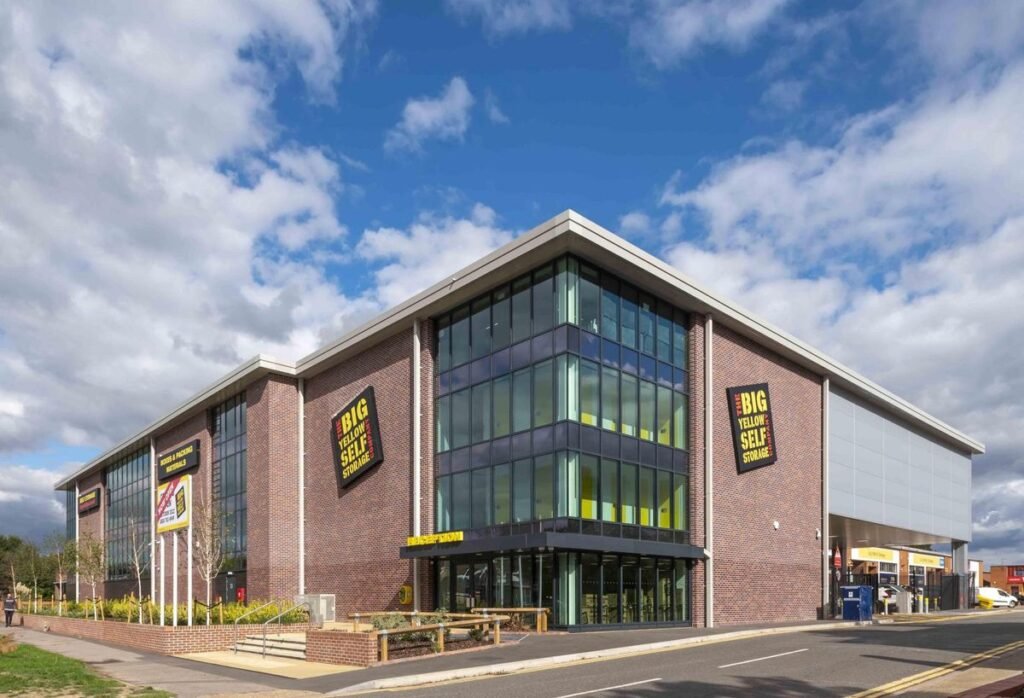In June, U.S.-headquartered investor Harrison Street announced its £150M entry into the European self-storage market with a newly formed UK joint venture with property and asset management group Pacific Investments.
A relatively fragmented market, a growing customer base and the arrival of new players could prompt expansion of the sector and more capital invested, with Harrison Street and Pacific among the first to declare plans to become major players over the next three to five years.
“We are very focused on alternatives such as senior living, PBSA and self-storage, where we see a supply-demand imbalance that will produce strong levels of return,” Harrison Street Managing Director and Head of European Transactions Josh Miller said.

Big Yellow leads on space in a rapidly expanding UK self-storage market.
The joint venture partners are targeting a nascent sector that saw turnover hit £1.2B in the year to March, according to a report by Cushman & Wakefield and the Self Storage Association UK, with revenues up 6% to £29 per SF and occupancy at mature stores at 79%.
Of the 64M SF of storage space available as of March, Big Yellow accounts for 6.4M SF, Safestore 6M SF, Shurgard 4.5M SF, Access 3.6M SF and Storage King 2M SF. Cushman & Wakefield estimates the market could grow another circa 20M SF by 2040.
Harrison Street has invested nearly $3.7B across approximately 322 storage assets in the U.S. and Canada, and the firm has realised investments on 186 storage properties for a gross transaction value of $1.5B.
The Harrison Street-Pacific JV is initially looking to invest around £150M over the next two years, and Miller said that he is looking at this as a scalable opportunity, entering Western Europe in the next 12-24 months.
The portfolio will be seeded with three assets comprising approximately 138K SF of lettable space, with a mix of development and conversion projects.
Pacific’s majority-owned self-storage property management platform, Engage Management Services, will operate the assets under the Here Self Storage brand, which has sites in Loughborough, Northampton and Salisbury.
“We have been looking at the UK and Europe for quite some time, deciding on when the best moment to enter the market would be,” Miller said. “And while we don’t need to be the first mover into a market, we like to be early.”
He said the UK meets the required supply-demand criteria. The U.S. is the most mature market at around 6-9 SF per capita, Australia has 2 SF, and the UK has nearly 1 SF, with Europe between 0.2 SF and 0.4 SF.
The UK has the right balance of demographics, population and affluence. Typically in the U.S., usage is split around 80-20 between individuals and small companies storing excess inventory, which is what Harrison Street expects in the UK, Miller said.
Harrison Street’s move reflects growing interest in the sector, but establishing and growing a platform is difficult because the market is still very much undersupplied, Cushman & Wakefield Head of Self Storage Philip Macauley said.
“Existing operators are desperately trying to grow the size of their platform, UK and European investors who have already heavily invested in the sector are trying to reallocate funds, then there are new investors,” he said.

Customers are increasingly using units as an “extra room” rather than for temporary storage.
U.S. money is initially coming into the UK market, ahead of looking at Europe. In comparison, Europe is still an immature market, and hedge funds or private equity firms, with exit horizons of three or five years, tend to favour the UK to get returns in a shorter period in a more established market.
He said planning remains difficult but has become less of an issue. Competing for sites with residential developers is challenging.
“When you get the right site in the right location, they’re very valuable. But new entrants are also willing to look at conversions, be that from industrial sites, retail warehousing, car showrooms, car parks and office buildings,” he added.
“There’s not a great deal that is not convertible to self-storage.”
Macauley said smaller operators have attracted younger and middle-aged customers through online booking and phone-based access in a market where “there isn’t a huge amount of brand loyalty.” There has been a rise in lifestyle-based storage where customers opt for a one-bedroom home and store possessions rather than rent a two-bedroom home, for example.
Self Storage Association UK CEO Rennie Schafer said that finding the right sites is proving difficult, and planning can often take up to a year, which is slowing the market.
“It’s a segmented sector, with self-storage encompassing everything from containers on farms to the Big Yellow-type facilities,” he said. “But as we have seen technology automating more, that has opened up more potential sites, meaning self-storage can go in different locations and be feasible in five- or six-unit-type facilities.”
Schafer said that while the U.S. and Australia are more mature and larger markets, comparisons with the U.S. are difficult because land is much more readily available and costs are lower, with much greater market awareness.
Australia has seen increasing automation and smaller sites and other types of real estate being used, such as redundant shopping centre real estate.
“The other change we are seeing is lower churn,” Schafer said. “Typically, people in the UK have tended to use self-storage for short periods of time, meaning operators are constantly having to replace their tenants. However, more people are starting to use self-storage as they do in the U.S., as part of their lifestyle, treating it as an extra room in their home.”

